How to write an inspection and test plan
Contents |
[edit] Introduction
An Inspection & Test Plan (ITP) is a document that describes the plan for managing the quality control and assurance of a particular element of the construction works providing information on the requirements, an overview of the method(s) to be used, responsibilities of relevant parties, and documentary evidence to be provided to verify compliance.
Based on the generic template provided (File:18 04 13 CONSIG ITP Template Rev 3.0.pdf), the following guidance takes you through the process of establishing an ITP. This article should be read in conjunction with the article "Inspection & Test Plans (ITPs)".
The Inspection and Test Plan Template (17 07 28 CONSIG ITP Template Rev 2.0) is also available in Excel format for information purposes and may be downloaded and utilised as appropriate. Please click here to access the file.
[edit] Step 1: Scope
A simple summary of the scope of the works applicable to the ITP should be included. It may also be useful to specify what is NOT included to provide additional clarification for anyone reading the ITP.
[Figure 1: ITP Scope Summary]
[edit] Step 2: Determine the criteria / gather the relevant documents
Most people associate the criteria for the works with the drawings and specifications. Although these are likely to be the most significant sources of information, there are others and it is important to consider them. Drawings and specifications often refer to and require compliance with other documentation (e.g. a specification for concrete may refer to the National Structural Concrete Specification). Therefore, the following may be a list of relevant items to consider although this is not exhaustive:
- Drawings (including notes on the drawings)
- Design specifications
- British / European / International Standards
- Other standards (e.g. National Structural Steelwork Specification, National Structural Concrete Specification)
- Manufacturers’ requirements
- Contract requirements
- Planning conditions
- Building Control requirements
- National House Building Council requirements
- Legislative requirements
- Lessons learnt workshops
- Business Management System of the organisation
- Sample and Benchmarks
[edit] Step 3: Work out the stages of the delivery
When producing an ITP is it often useful to think about the stages of delivery in chronological order and assign the assurance activity items (produced in Steps 4 and 5) to a relevant stage as shown in Figure 2. Further information about each stage is provided below.
[Figure 2: Delivery stages]
Pre-Construction: There may be items which need to be inspected & witnessed before the works start. For example, it would be prudent to undertake a check to make sure that the design is suitably developed. There may be a requirement for design prior to any manufacture or site works, e.g. structural steel fabrication drawings. This may require drawing approvals, checking of calculations etc. There may also be a requirement for the submission and approval of samples or mock-ups to verify design requirements. These should be referenced where appropriate. Additionally, the Risk Assessment / Method Statements may require approval and a check might need to be completed to ensure persons undertaking the works are suitably competent.
Material Conformity: What actions need to be completed to ensure the materials are compliant? Do materials need to be approved? How must materials be stored? Do materials need specific certification?
Off-Site Manufacture: In cases where a product is manufactured away from the site, appropriate consideration is often not given to how the principal contractor or contractor will ensure and demonstrate the product is compliant. However, it is extremely important. Once the product arrives on site, if incorrect, it will be too late and may have significant implications for the programme. Therefore, it is important to consider how compliance with this work will be assured. For example, it may be necessary to visit the factory, undertake Factory Acceptance Tests (FATs), or request specific assurance documentation. In some situations, a completely separate ITP may be produced by the principal contractor for an element of the works which is manufactured off-site.
Generally, where a proprietary product is used, a Certificate of Conformity will often suffice as a means to demonstrate compliance.
Site Works: In most cases, the site works section of the ITP will constitute the most significant proportion by volume of the ITP. This section will specify how the physical construction works on site will be inspected and tested.
Where specified or appropriate, requirements for establishing benchmarks to set workmanship standards for quality requirements should be incorporated into the ITP.
Testing & Commissioning: Although, as described earlier, the ITP document collectively describes testing/inspection activities, this section usually specifies the testing of the completed works and is often most significant for Mechanical, Electrical and Public Health packages. However, testing is still required for many other civil and building elements of the works such as cube and slump tests for concrete, mortar cube tests, hammer drop tests for screed, noise attenuation testing for internal partitions and air leakage testing for building control acceptance to name a few.
Post Construction Activities: Although the physical works element may be completed, there are other activities that may still need to be undertaken post-completion. For example, ‘snagging’ of the works may be required and the Operating & Maintenance Manual information provided. Works may also have an inspection and handover process to the client. One of the most important elements of this stage may be how the works are to be protected in readiness for works by follow on trades.
[edit] Step 4 & 5: Detail each individual item on the ITP
Steps 4 & 5 will most likely take the most time and effort to complete. The outcome from these steps will be to have all quality assurance activities relevant to the specified scope of the works (stage 1) listed on the ITP.
To determine the items which need to be listed on the ITP, the most straightforward way is probably to go through each of the criteria documents in turn in a systematic manner and pick out the items which need to be listed on the ITP.
It is then necessary to consider each item in turn and provide details of how the criteria will be met, the evidence which will be produced, who should be involved in the assurance activity and finally the type of inspection or test involved.
To help with steps 4 and 5, ITP templates are often split into a series of columns with one column dedicated to each piece of information.
[Figure 3: An activity item for an ITP with information split into columns]
There is no standard which states which columns should be included and generally each organisation develops their own preferred template. On occasion, clients may also specify the use of a particular template. The attached template provides an example but maybe adapted as required.
Using the attached template:
Step 4a: Firstly, the quality assurance activity is specified:
[Figure 4: Assurance Activity]
Step 4b: Next, details of the criteria should be provided. It is useful (for future reference) to include full details of the exact source document which should also include the revision number (as revisions of the same document could differ) and location within the document (e.g. specification clause number):
[Figure 5: Requirement]
Step 5a: A description of the activity that will be undertaken to ensure compliance should then be provided:
[Figure 6: Compliance]
Step 5b: A corresponding description of how compliance will be demonstrated should then be specified:
[Figure 7: Demonstration]
Step 5c: Details of the evidence to demonstrate compliance should be provided including information on where it may be located.
[Figure 8: Evidence]
Step 5d: It is useful to include information on who is responsible for ensuring the assurance activity is completed satisfactorily and the resources required:
[Figure 9: Activity Ownership & Resource]
Step 5e: Finally, the parties or persons involved in the inspection activity should be specified. Very often this information is presented with one column dedicated to each party/person. Codes are usually developed which summarise the type of test and level of involvement:
[Figure 10: Parties/individual involved; type of test]
As with the ITP template, there are no standard ‘codes’ and organisations usually develop their own preferred method. However, there are some standard accepted types of inspection and test. The following are the most common categories of inspection/test activity. Suggested abbreviations are included in brackets:
- Witness (W): The activity will be verified by the party/individual acting as a witness to the satisfactory completion of the item.
- Inspection (I): The activity will involve a party or person undertaking an inspection of the item.
- Hold Point (HP): The next stage must not commence until the item is completed satisfactorily.
- Surveillance (S): A ‘surveillance’ is essentially a mini audit that reviews an aspect of the works in more detail to verify compliance.
- Audit (AU): An audit would require that a competent auditor undertakes an audit to verify the item is satisfactorily completed (e.g. for off-site manufacture).
Often, it is not necessary or practicable for every party to fully witness or inspect all works activities but, dependent on contractual relationships, a representative sample may be used to gain the confidence of compliance. For example, the ‘owner’ of the ITP (often the trade contractor) will likely need to verify compliance of all aspects. However, the principal contract may witness only a representative percentage and the project client select a small sample still. Therefore, it is often useful to indicate the level to which the party/individual will be involved (e.g. 10%, 50%, 100% etc.). In the above example (Figure 10), the ITP column for Principal Contractor specifies ‘W(100)’ indicating 100% witnessing of the activity although the principal contractor’s client inspects 10% ‘I (10)’.
Hold points are a critical part of the quality assurance process. In the above example (Figure 10), the subcontractor may not proceed to order concrete until the UKAS accreditation is completed. Therefore, the subcontractor inspects the document but this is also a hold point (H / I).
Rev 3.0: Original article written by Mike Buss (14/7/17) & reviewed by Jon Adshead (20 / 07 / 2017) and Simon Ellis (8/8/17) on behalf of the Construction Special Interest Construction Working Group (ConSIG CWG). Article peer-reviewed and accepted for publication by ConSIG 09 / 08 / 2017.
Disclaimer: The use of the ITP template must be tailored to contract conditions and the authors and the CQI Construction Special Interest Group bear no responsibility for any unintended consequences resulting from an inappropriate application of the principles described. The ITP template provided should be treated as indicative only.
--ConSIG CWG 13:17, 05 Jan 2019 (BST)
[edit] Related articles on Designing Buildings
- Assurance and self-certification.
- Construction quality.
- Commissioning.
- Design freeze: a quality perspective.
- How to write a method statement.
- Inspection.
- Inspection and test plan.
- Method statement.
- Operating and maintenance manual
- Principal contractor.
- Quality assurance.
- Quality culture and behaviours.
- Risk assessment.
- Samples.
- Specification.
Featured articles and news
Considerate Constructors Scheme acquires Building A Safer Future
Acquisition defines a new era for safety in construction.
AT Awards evening 2024; the winners and finalists
Recognising professionals with outstanding achievements.
Reactions to the Autumn Budget announcement
And key elements of the quoted budget to rebuild Britain.
Chancellor of the Exchequer delivers Budget
Repairing, fixing, rebuilding, protecting and strengthening.
Expectation management in building design
Interest, management, occupant satisfaction and the performance gap.
Connecting conservation research and practice with IHBC
State of the art heritage research & practice and guidance.
Innovative Silica Safety Toolkit
Receives funding boost in memory of construction visionary.
Gentle density and the current context of planning changes
How should designers deliver it now as it appears in NPPF.
Sustainable Futures. Redefining Retrofit for Net Zero Living
More speakers confirmed for BSRIA Briefing 2024.
Making the most of urban land: Brownfield Passports
Policy paper in brief with industry responses welcomed.
The boundaries and networks of the Magonsæte.
London Build Fire and Security Expo
20-21 Nov and now with new Ambassador Programme..
The Scottish Building Safety Levy
Eight weeks of consultation closing on 18 November.
The grey, the brown and the golden rules of housing
shifting policies from the wild west of housing development.
Future proofing homes that are fit for purpose
Specification challenges and the role of plastic.
Thousands of new homes unlocked for brownfield sites
£68 million to 54 councils for neglected land into new homes.








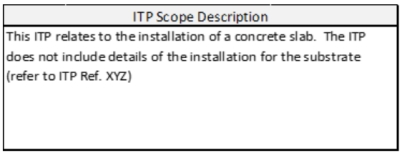


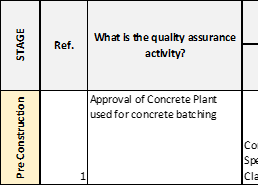
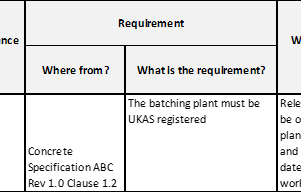
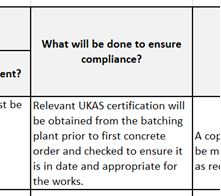
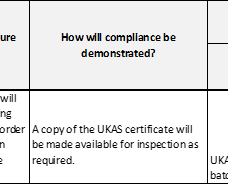
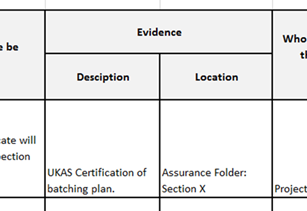

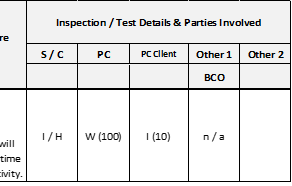

















Comments